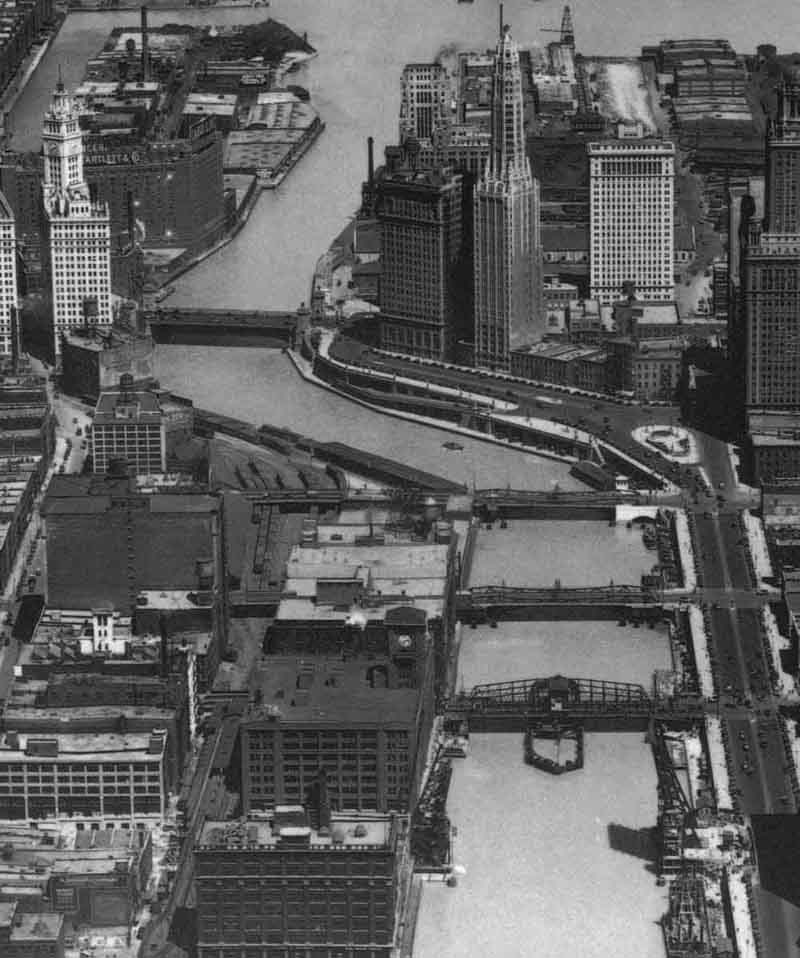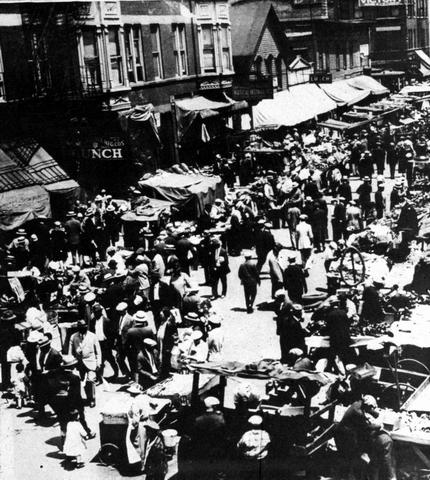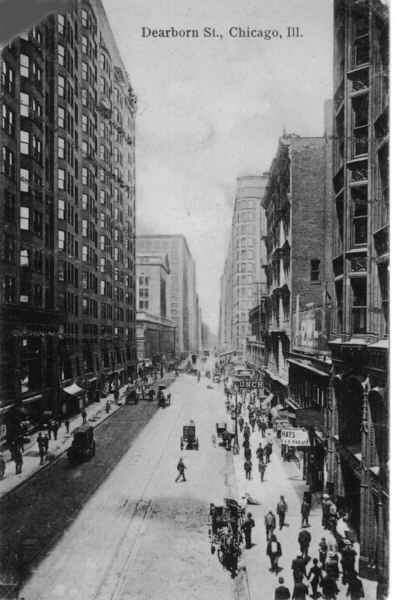
“This is North- West Chicago,” said Drouet. “This is the Chicago River…Chicago is getting to be a great town," he went on. “It's a wonder. You'll find lots to see here.” 2
-- Sister Carrie
Home | Nelson Algren | Theodore Dreiser | Richard Wright | James T. Farrell
 |
“This is North- West Chicago,” said Drouet. “This is the Chicago River…Chicago is getting to be a great town," he went on. “It's a wonder. You'll find lots to see here.” 2 -- Sister Carrie |
Van Buren Street "Minnie's flat, as the one-floor residence apartments were then being called was
in part of West Van Buren Street which was inhabited by families of laborers
and clerks, men who had come and were still coming with the rush of population
which was pouring in at the rate of 50, 000 a year."3 |
 |
Halsted Street 800 W from 3766 N to 12960 S In the early 1900s, part of the street became known as Migration Mile because of the many immigrant groups settled along it. A tourist on Halsted might have seen men haggling in the open-air market of Maxwell Street [pictured on left], another person selling Mexican ice cream from a push cart, and live lambs straining on tethers outside a Greek grocery.4 |
| Dearborn Street 36 W, from 1454 N to 5458 S “Without much thinking she reached Dearborn Street. Here was the great Fair Store, with its multitude of delivery wagons about it's long window of display, its crowd of shoppers.”5 |
 |
Franklin Street 300 W, from 1156 N to 416 S “You'd better look at those big manufacturing houses along Franklin Street and just the other side of the river,” he concluded. “Lots of girls work there.”6 |
Growing up, Dreiser lived in conditions similar to the Van Buren residency
described in Sister Carrie. Dreiser moved into his aunt's apartment with his
family, just like Carrie moved into her sister Minnie's flat. He grew up on
West Madison and Throp Streets where the neighborhood was a melting pot of
immigrants. By the age of 16, Dreiser began work at a restaurant on Halsted
Street.